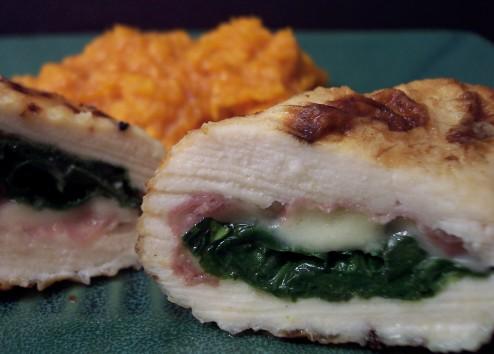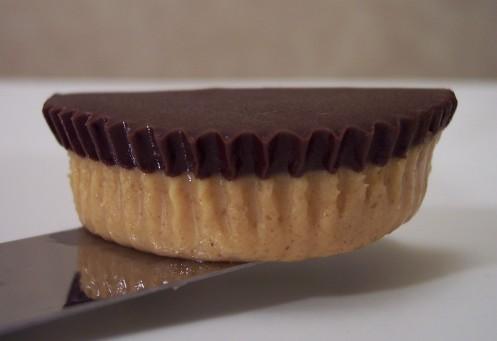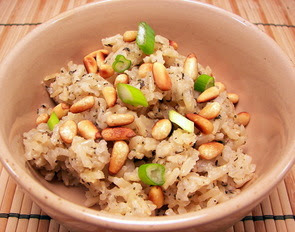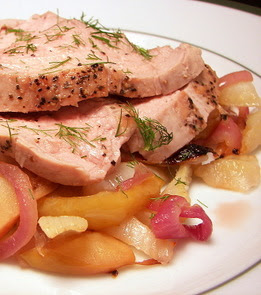9 new recipes came from the kitchen this week - our favorites were of course those wicked
Chocolate Oatmeal Almost-Candy Bars, the
Southwestern Chili Pasta and the
Korean-Spiced Beef and Cabbage Rolls.As you know by now, we cook and use a variety of different grains, pastas, flours and whatnot... I've been asked a few times how I keep things organized and stored. So, here I present to you our shelf of goodies (don't forget, you can get a closer view by clicking on any pictures!).

We do have a fairly big pantry "closet", but I like to keep things out where I can see them... I find that I tend to use the ingredients more often this way! All of these clear jars come from Ikea and are available in a multitude of sizes and shapes. On the top shelf is whole-wheat spaghetti, orecchiette and whole-wheat penne pasta (there are others in the pantry though!)
The next shelf has pearl barley, brown basmati rice, whole-wheat couscous, steel cut oats, arborio rice, wheat berries and whole grain cornmeal. Next comes all-purpose flour, oat groats, Israeli couscous, green lentils, kasha and granulated sugar. Underneath that is brown sugar, quinoa, M&Ms(!), jasmine rice, bulgur and confectioners' sugar. As you can see the other shelves occupy some baking pans, a bowl of Granny Smith apples and a variety of pound plus chocolate bars from Trader Joe's (we go through so much chocolate it is ridiculous!). You may be asking where all the whole-wheat flours we use are... I keep those in the freezer, along with most of our nuts, to keep them fresh and to prevent them from going rancid. While we buy in bulk and go through most of those ingredients quickly, I also think it just helps to preserve their flavor a bit!
Since it is so quick to make, I was able to use some of that whole wheat flour to prepare a batch of our
favorite dough for this
Fig, Prosciutto, and Blue Cheese Pizza we made for lunch today!

After we whizzed together the dough and let it rest, we were able to easily stretch it out to about a 13" circle - if you would like a little more crunch to the bottom of the finished pizza, use some cornmeal, instead of the flour, while maneuvering the dough. We thought any sort of tomato-y sauce would be a little odd with the combination of flavored we were after, so we opted to just rub the dough with a light coating of extra-virgin olive oil. We sprinkled creamy blue cheese crumbles over the now-glistening round of dough, followed by chopped sweet black mission figs and a handful of buttery fontina cheese. With such strong flavors already, a good dose of fresh ground black pepper was all we needed to add before we slid the pizza on the stone.
Where's the prosciutto you ask? Well, some recipes call for it to be added before it hits the oven, while some have you add it after - use it how you see fit as we think it is a visual and textural preference with what you like. We have found we like prosciutto best (at least with pizza) when it is applied after. The residual heat will just slightly warm up the salty meat without making it too dry. We didn't have any idea if this would actually turn out well as we were really just playing around with flavors and using up leftover ingredients in the fridge, but Jeff and I very much enjoyed this salty, sweet and pungent combination of flavors paired with that crisp wheat-y crust!

Recipes Since our bananas were very ripe, I didn't add anything to them - if you still want to make these and your bananas are not as sweet as you would like, add a sprinkle of brown sugar when you mash them. The assembled toasts are then dunked in a mixture of eggs and milk that is spiced up with vanilla, cinnamon and a pinch of fresh grated nutmeg. They are briefly cooked in a pat of butter just until both sides are golden - the toasts then slide into the oven to continue baking until the banana filling is warmed through.
Since our bananas were very ripe, I didn't add anything to them - if you still want to make these and your bananas are not as sweet as you would like, add a sprinkle of brown sugar when you mash them. The assembled toasts are then dunked in a mixture of eggs and milk that is spiced up with vanilla, cinnamon and a pinch of fresh grated nutmeg. They are briefly cooked in a pat of butter just until both sides are golden - the toasts then slide into the oven to continue baking until the banana filling is warmed through.






























































